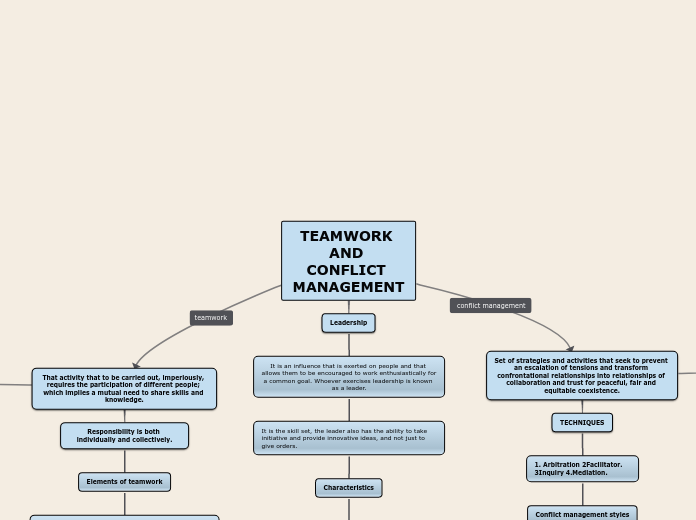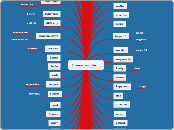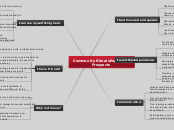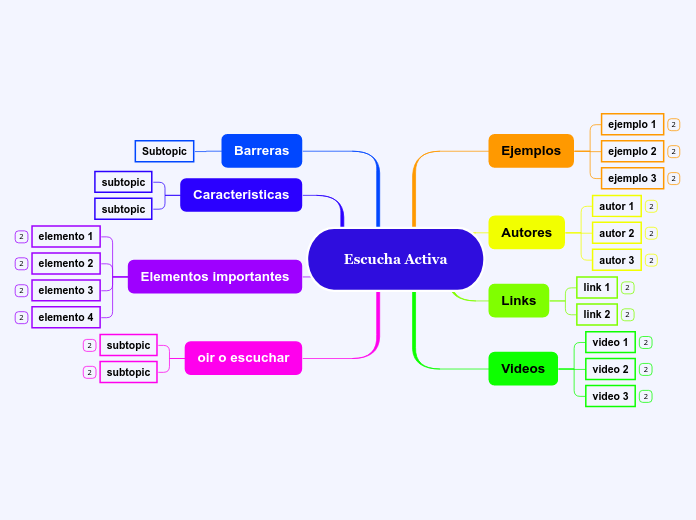Purposes and Values
Relationships and communication
Moral
Recognition and appreciation
Optimal productivity
Flexibility
Empower
Characteristics of Effective Teams
The organizational process for fostering teamwork should begin with leadership that creates a business strategy and focuses on the crucial objectives of the company. From there, it is necessary to improve the communication process and build trust between teams.
Knowing how to distinguish the facts from the interpretations: to find solutions and to be able to explain what happens or what happened, it is important to become aware of the facts and know how to present them effectively and objectively.
Empathy: important to know how others feel, to be able to listen to them in an empathic way in order to understand their position. And, is that, to find solutions we need to know what others need or think.
Assertiveness: it is important to know how to speak your mind and take your needs into account without aggression or arrogance. It is important that your opinion is heard and taken into account.
Listen: Listen to understand and to be able to find solutions that make us happy. Without listening we do not develop possible solutions and we cannot know exactly how others feel. Listening is the basis of effective and efficient communication.
Manage emotions: with fear or anger we cannot see the situation objectively and therefore it is difficult to find the right solution, therefore, it is important to know how to control extreme emotions.
Keys to handling
Set of strategies and activities that seek to prevent an escalation of tensions and transform confrontational relationships into relationships of collaboration and trust for peaceful, fair and equitable coexistence.
TECHNIQUES
1. Arbitration 2Facilitator. 3Inquiry 4.Mediation.
Conflict management styles
* Willing * Evasive * Committed * Collaborative * Competitive
That activity that to be carried out, imperiously, requires the participation of different people; which implies a mutual need to share skills and knowledge.
Responsibility is both individually and collectively.
Elements of teamwork
Teamwork is based on "the 5 C's" to get the best results. Coordination, Complementarity, communication, trust and commitment
Norms for teamwork: They facilitate the execution of the planned goals or objectives according to how they are established.
Cons: Dropouts
Liability can be diluted
Process delay
Possible tensions
Risk of dispersing energy
Advantages in teamwork: Greater efficiency, a better work environment, greater success in work, Greater speed in the completion of work, Greater diversity in addressing the problem, Greater work capacity, Strengthening of cooperation and cohesion bonds
TEAMWORK AND CONFLICT MANAGEMENT
Leadership
It is an influence that is exerted on people and that allows them to be encouraged to work enthusiastically for a common goal. Whoever exercises leadership is known as a leader.
It is the skill set, the leader also has the ability to take initiative and provide innovative ideas, and not just to give orders.
Characteristics
Have a positive thought
To be honest
Know how to delegate
Encourage good communication
Inspire the group
Establish strategies for a balanced life
Line up the team
Give credits when applicable
Encourage growth and Appreciate achievement
Maintain a neutral position
Elements
Culture
Values, principles
Skills, Capabilities
Processes, Methodologies
Tools
Organizational Culture And Leadership
Ability to implement, facilitate and adapt an Organizational Culture
Process of adaptability to teamwork
Diagnosis of needs
Definition of objectives
Communication of decisions
Encourage behaviors
Institutionalize Organizational Culture
Characteristic attitudes, beliefs, values and habits within an organization
Teamwork
Committed, reliable, communicative and successful collaborators with the organization's objectives.
Leadership styles
Charismatic Leadership
Absence of authority
The influence of the leader is determined by the admiration of his followers
Good motivation
Little use of power
Possible disorganization
Democratic Leadership
Delegation of authority
The influence of the leader is determined by motivation
High enthusiasm index
Higher quality and quantity of production
High team morale
Satisfaction of needs
Autocratic Leadership
Centralization of authority
The influence of a leader is determined by the use of power
Reactions to Organizational Culture
Submission
Endurance
Minimum acceptance of responsibility
Irritable
Antipathy









